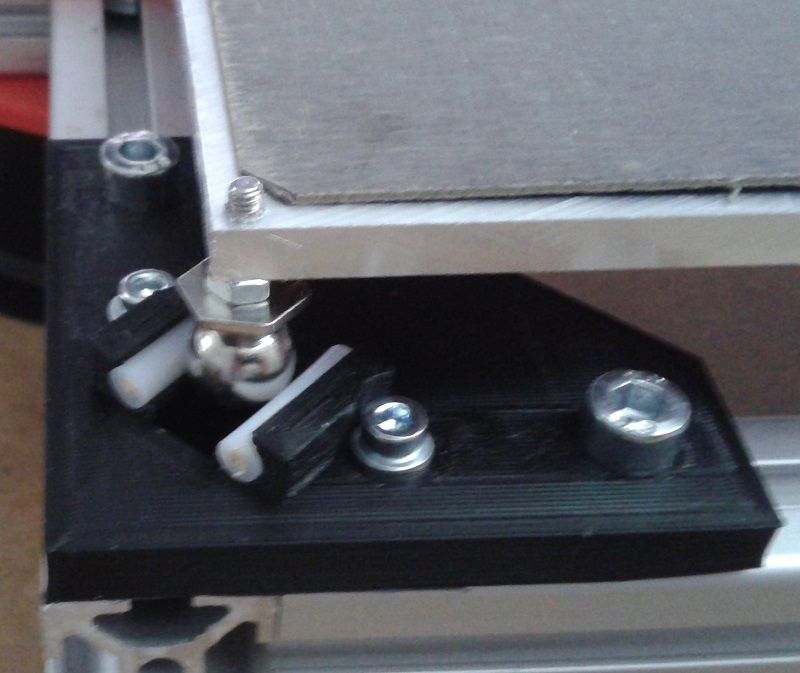Maxwell vs Kelvin Kinematic coupling
-
I've been looking into a kinematic bed mount for my printer bed and I've notice that there seems to be two prevalent conventions when it comes to doing so (Maxwell and Kelvin). Does anyone have any insight as to which might be better, the pros and cons of each, or which you've implemented? Thanks in advance!
-
@gwatson90 Both work fine, but the Kelvin mount is particularly easy to implement. It requires only a hole and a slot in a straight line relationship, easy to do with hand tools and extra easy if you have access to a milling machine. It has a fixed reference point that doesn't move, so the bed will always be at the same place at any specific temperature. If you position the leveling screws intelligently, you need only make two adjustments to level the bed (assuming you're doing it manually), one for pitch and the other for roll. Adjust pitch first, then adjust roll, which doesn't affect pitch, and you're done.
The Maxwell mount requires three slots aimed at a central point and has no physical reference point. That means if the slots aren't accurately aimed at a central point, the bed may not have a stable position from one heat up/cool down cycle to the next. Does it really matter? Maybe if you're trying to resume a print after a power failure that is long enough for the bed to cool down and then have to heat up again before restarting the print, otherwise, probably not. If you have a mill with a rotary table, it can be pretty easy to mill slots at the correct angles. Otherwise, it's a bit more difficult, but someone has probably come up with a clever technique that works fine.
Either way you go, you'll be far better off than supporting the bed on corner springs.
-
@gwatson90 said in Maxwell vs Kelvin Kinematic coupling:
Does anyone have any insight as to which might be better, the pros and cons of each, or which you've implemented? Thanks in advance!
I use an alternative arrangement which works well for me. It's difficult to describe in words but essentially the aluminium build plate is fixed to a 2020 frame via 4 bolts going through hollow pillars about 12mm in length. Very little heat gets transferred to the frame so the linear guides (which are fixed to the frame and not the plate) are unaffected by any expansion of the plate itself. The thermal expansion of the aluminium plate is taken up by slight sideways flexing of the bolts. I run the bed at up to 120 Deg C depending on filament, without any form of firmware flatness or levelling compensation, and have no issues.
-
Thank you for your replies, I've spend a good amount of time on both of your blog sites reading through all the information so I appreciate the input very much. I'll likely stick with the Maxwell implementation since it seems to handle expansion of the bed all the same and I'm confident that I'll be able to position the groves correctly.
-
@gwatson90
I decided to use Kelvin style, since all three dseigns are the same. They are easy to build in such way that their pivot point is equal height.

I've made the sliders from regular PTFE tube and filled it with pieces of wooden toothpicks. I like pragmatic solutions
//edit And don't forget to put magnets under the ball studs
-
I like the PTFE tubing as it would reduce the friction on the contact surfaces quite a bit. Thank you!
-
@o_lampe That's actually a Maxwell type if it is using 3 slots...
-
@mrehorstdmd
´´´
mrehorstdmd
2 Mar 2022, 02:06@gwatson90 Both work fine, but the Kelvin mount is particularly easy to implement. It requires only a hole and a slot in a straight line relationship
´´´If that's what you described earlier is a Kelvin mount, I thought my setup is Maxwell then? Three ballstuds on sliders aiming to the bed center..
-